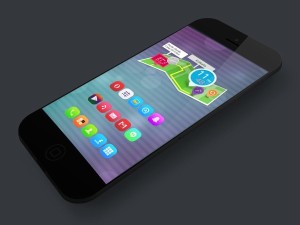 iOS 8 isn’t the radical departure from previous versions of Apple’s mobile operating system that iOS 7 was. While there exist brand new features, some of the most attractive elements of the latest OS are refinements to existing ones. They include notifications, Spotlight searches, and Siri interactions. Let’s dive in to see how the changes will affect you.
iOS 8 isn’t the radical departure from previous versions of Apple’s mobile operating system that iOS 7 was. While there exist brand new features, some of the most attractive elements of the latest OS are refinements to existing ones. They include notifications, Spotlight searches, and Siri interactions. Let’s dive in to see how the changes will affect you.
Quick Reply
If you’re running OS X Mavericks on your Mac, you’re aware of the ability to quickly reply to certain items in Notification Center. For example, if someone sends you a text message, you can respond to it just by typing in Notification Center – no Messages app necessary. Likewise, you can use this same area to enter a quick response to an email message or answer a FaceTime call.
iOS 8 offers a similar feature. In earlier versions of iOS you could see notifications on the lock screen or by swiping down from the top of a device’s screen to expose Notification Center, but your interaction with those notifications was largely limited to reading them and then launching their host app by tapping on them.
With iOS 8, Apple brings greater interaction to notifications – and not just those issued by Apple’s apps. For example, if you now receive an iMessage, you can reply to it from the lock screen or Notification Center. In either case just swipe left on the message to expose a Reply button. Tap Reply and a Text Message field appears where you can enter your text. Tap Send next to that field to send your message. Or if you receive a calendar invitation, similarly swipe it to the left and tap Decline or Accept to do just that. To delete any notification, just swipe it to the left and tap the X button to remove it. As before, in most cases you can launch a notification’s host app by tapping on the notification. (Of course when you do this from the lock screen you’ll have to unlock the device if it’s protected with a passcode.)
Touching the people who matter
Another improvement brought with iOS 8 is the ability to quickly reach out to the people who matter to you most; the people who have most recently been in contact with you. This happens when you invoke iOS 8’s multitasking interface.
Double-click on your device’s Home button and you’ll see not only a carousel of the apps recently accessed on your device, but you’ll also spy favourite and recent contacts as represented by round icons at the top of the screen. You can assign Favourite status to contacts within the Contacts app and, on an iPhone, within the Phone app.
To contact one of these people, just tap on their icon. The results you see depend on the kind of information you’ve added to their contact screen. For example, if you’ve added FaceTime, texting, and mobile phone information to Jack Jones’ contact card, tapping his icon will expose links to each means of communication. Tap FaceTime and a FaceTime call will be placed to the number or account associated with Jack’s contact. Tap Message and the Messages app opens, ready for you to compose and send a text.
Shining a light on Spotlight
Under iOS 7 you could swipe down on an iOS device’s screen to explose the Spotlight field. You’d use this to launch apps or access information stored on your device – contacts, music, events, email, messages, and so on. If you wanted to look for something that isn’t on the device you could enter a search term or phrase and then tap Search Web or Search Wikipedia.
With iOS 8, Spotlight is in contact with the outside world to a greater extent. Now, instead of having to specifically tap Search Wikipedia, Wikipedia entries automatically appear in the results. Spotlight will also search news sources, nearby places, Apple’s stores (iTunes, App, and iBooks), and suggested websites. It’s also able to show you movie showtimes cinemas near you.
When you tap an entry an appropriate app will launch and display the results. For example, if you’ve installed the Fandango app and tap on a movie result, Fandango launches and presents you with the information you want. The Safari app has access to these same sources, so you’ll get similar results when performing a search within it.
As you could before, you can limit what Spotlight searches for. To do so, tap Settings > General > Spotlight Search and you’ll see a list of search results. These include Applications, Spotlight Suggestions, Contacts, Music, Podcasts, Videos, Audiobooks, Notes, Events, Mail, Voice Memos, Reminders, Messages, and Bing Web Results. If you disable Spotlight Suggestions and Bing Web Results, Spotlight will search only the contents of the device rather than crawl the Web for results.
So, about Siri
Siri sports two significant improvements. The first is that it’s more responsive under iOS 8. Instead of waiting for you to complete your thought, it recognises words as you say them. Another trick up Siri’s sleeve is that if you plug your iPhone into a power source, saying the words “Hey Siri” will cause Siri to come to life, ready to do your bidding. This will be particularly helpful when you’ve jacked your iPhone into a car’s power outlet and want hands-free help from iOS’s digital assistant.
If you’re in the habit of shouting “Hey Siri” in your sleep, you’re welcome to switch off this feature by going to Settings > General > Siri and switch off the Allow “Hey Siri” option.





